This post has not been edited by the GamesBeat staff. Opinions by GamesBeat community writers do not necessarily reflect those of the staff.
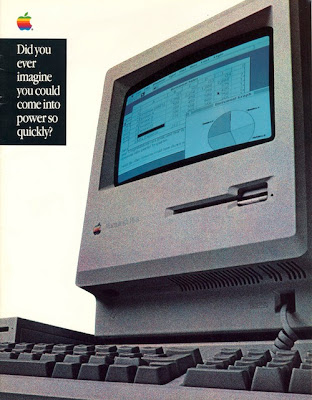 My introduction to both video games and computers came from a rather unusual source for a child raised in the 1990s. Other kids my age were inheriting 8-bit consoles or picking up the Super Nintendo or Sega Mega Drive/Genesis, or they were experiencing the torture of MS-DOS. As for me, I had a Mac. Not a shiny new Mac, mind you, but an aging Macintosh Plus, with a monochrome 9-inch monitor, no hard drive, and 800 KB floppy drive. Most of the time, I had to first use the boot disk to start the system, then switch to the game disk, although a few games were bootable. Freezes, which were not uncommon, were typically resolved with a resounding whack to either the side or top of the computer. Sometimes, though, a hard-reset was required. And that often resulted in a “sad Mac” on startup.
My introduction to both video games and computers came from a rather unusual source for a child raised in the 1990s. Other kids my age were inheriting 8-bit consoles or picking up the Super Nintendo or Sega Mega Drive/Genesis, or they were experiencing the torture of MS-DOS. As for me, I had a Mac. Not a shiny new Mac, mind you, but an aging Macintosh Plus, with a monochrome 9-inch monitor, no hard drive, and 800 KB floppy drive. Most of the time, I had to first use the boot disk to start the system, then switch to the game disk, although a few games were bootable. Freezes, which were not uncommon, were typically resolved with a resounding whack to either the side or top of the computer. Sometimes, though, a hard-reset was required. And that often resulted in a “sad Mac” on startup.
I have fond memories of games that most people — even those who live and breathe gaming culture — have never heard of, and likely never will. Glider moved me with its whimsical world where the paper plane was king. StuntCopter entertained me with a falling stick-figure and a horse that could be knocked over. Spelunx taught me about gravity, lightning, and the power of learning through play. ShufflePuck Café consumed me as I tried to beat all its weird characters. Dark Castle offered an atmospheric action/puzzle/platformer hybrid that was years ahead of its time. Banzai, Super Maze Wars, Artillery, MacSki, Memory, Amazing, Block Out, Maelstrom, and many other unique little games exposed me to all sorts of ideas, filling my childhood with hours of fun and entertainment.
This is the first part in the story of my childhood, as it relates to Apple and the Macintosh computer.
There were times when I hated the Mac. My reasons varied from anger that it didn’t get more games to frustration that an old computer didn’t run as well as I wanted. I only had limited time to spend with the computer; if I had to spend some of that time troubleshooting, I would get mad. I’ll admit that I hit that Mac Plus too hard on more than a few occasions.
Yet no matter how angry or frustrated I would get with the Plus, or any Mac I’ve had since then, I never stopped loving it. In those early days especially, the Macintosh was distinguished from most other computers on the market by its likability. It felt good using a Mac. Far from being a trial of confusing menus or a text-only command-line interface, the Macintosh operating system and hardware was intuitive — it made sense at a time when computers were still inaccessible to most people. There was such coherency and consistency to its design, user interface, and appearance that you could not find elsewhere. It sure beat its chief competitor — a shameless pretender that was often an exercise in frustration and added an unnecessary layer to its popular-yet-underpowered (and outdated) MS-DOS core (hint: it starts with W).
The Early Days
Thinking back to the early days of my life with computers, certain things stand out. Most of them are games, but not all. I remember being spellbound by this mysterious platinum box with a colourful Apple logo on the front. No computer will ever capture my imagination like the Mac Plus did back then, with its inviting design and happy demeanour. My dad used a database application called FileMaker (which still exists). I had no idea what it did (or how). But I sure was impressed that all the stuff he put in was turned into something with numbers and columns that looked useful. We had a piece of educational software called Kid’s Time, which enabled me to create music and draw on the screen, amongst other things. It was so easy to use; so much fun that I could spend hours messing around with its features.
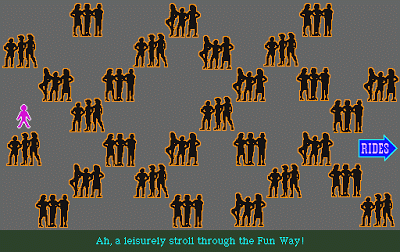
There was a game called At the Carnival, which amounted to little more than a series of puzzles that were set in a *gasp* carnival. I had a love for language and problem solving even at this early age, so I was absorbed by At the Carnival. It crashed the computer more times than I could count, and its graphics made my vision go funny when I played for extended periods. But I kept coming back, even when I had other favourites like Dark Castle, Space Quest II, and Where in the World is Carmen Sandiego? close at hand. One puzzle in particular stands out in my memory. It required you to guide a small child through a crowd of people. Some clusters would push you away; others would help you onwards. It captured the feeling of isolation, anxiety, and fear that goes through a child’s mind when they are lost in a busy public place. As a child vulnerable to bouts of panic or anxiety, working through this puzzle was like therapy.
Dark Castle introduced me to the world of platformers. It put you in the role of Prince Duncan, who must navigate his way through the castle of the Black Knight in order to find and defeat him. To say it was hard would be an understatement, but the three difficulty levels at least made it possible for non-masochists to complete the game. What made Dark Castle so impressive was its atmosphere. It had foreboding environments — limp prisoners chained to walls, huge structures, imposing caves — and an immersive sound design, complete with groans, screams, squeaks, and cracks of the whip that tore through the air around your speakers. And it did all of this in black and white.
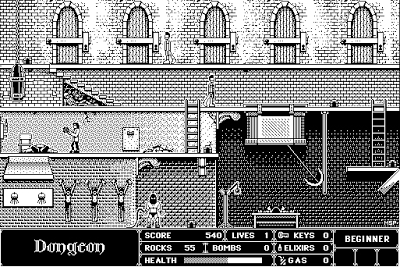
For a brief period, the Mac Plus was put in my bedroom. I would not regain the privilege of my own computer until I bought an iMac in 2008, around 15 years later. I can’t remember why or when exactly it was taken away, but I suspect it was to give to my grandfather, who I recall used it from around that time. Regardless, my most vivid memories of the Plus, and some of my best computer-related experiences, can be traced back to that time when I had my first Mac.
After school special
I would not have been able to have the Plus in my room at all if it wasn’t for my family’s new acquisition, a Macintosh LC II. Besides homework and TV, there were typically two things that I could do after school each day. I could run around entertaining myself with a soccer ball, basketball, or football (of the Aussie rules variety) — usually in the itchy grass behind the window furnishing shop my dad ran at this time. Or I could use the computer.
Unfortunately, I was a pretty sick kid. I had asthma, allergies, and a propensity to get whatever bug (read: minor illness) was going around. And even though I would happily run around with my soccer ball for hours on end, some of the plants behind the shop made me ill. So I often had to stay inside and while away the boredom with what few games were on the LC II. It was during this period that I fell in love with five games in particular: SimCity 2000, Spectre, Spelunx, Super Maze Wars, and Eric’s Ultimate Solitaire.

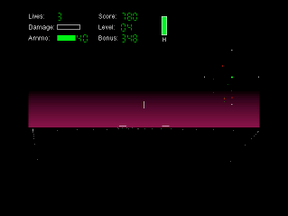
I had already played other Sim- games obsessively, completing SimAnt numerous times as well as sinking dozens of hours into the original SimCity. But SimCity 2000 was something else. It was all-consuming. I could never quite manage to succeed without cheats — my methodical play-style and desire for a large population alternately saw me run out of money and patience. But for me the game was about building and creating, so it didn’t matter. To this day, SimCity 2000 remains one of only a handful of games that I successfully converted my friends into playing as compulsively as me.
Spectre was a Battlezone-esque 3D tank battle game set in a hostile world where you had to find flags and shoot enemies to survive. It was one of my earliest experiences with 3D space on a 2D screen. Eric’s Ultimate Solitaire made me fall in love with Spider Solitaire long before it was an anti-productivity tool on Windows, and taught me to play various card games I’ve not heard of anywhere else. And Super Maze Wars was my first exposure to arena combat. In it, you pilot a ship that can carry up to 3 homing missiles, a number of “bullets,” and a few power-ups that improve handling and speed. You are in a maze with several other ships, each piloted by either AI or human opponents. And you compete in one of the typical arena combat modes — capture the flag, deathmatch (Frenzy), team deathmatch (Team Frenzy), gold rush, and so on. It was very addictive, even against computer opponents.
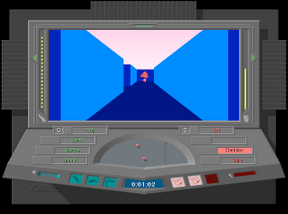
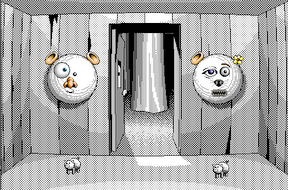
I was only four years old when Spelunx came out. Perhaps a little young to appreciate it fully, I nevertheless found myself instantly drawn to an underground world of whimsy and wonder. Playing in black and white, I filled in the colours with my imagination, because it was without doubt one of the most vibrant games I’ve ever seen (many of the animations were actually in colour). There was a teapot that contained an entire forest, a tree “gene-orator” that could be made to grow flowers, leaves, and fruit simultaneously on the same tree, a lightning simulator, an interactive painting, a stop-motion animation tool, a game in which you must catch bread with a toaster and launch it back into the hands of a yodeler, and many other weird, wondrous, and fun things. It was fascinating. I spent days just experimenting with the toys and activities in Spelunx. And I never would have known it existed if I wasn’t using a Mac.
An office suite called ClarisWorks, which was the predecessor to AppleWorks (and later iWork), was my go-to for school assignments. It had an amazing drawing program, which used vector graphics and had a wide range of purposes. Most of all, it was great for static multimedia — think brochures, magazines, advertisements, logos — of any kind. But its versatility and ease of use extended into my family creating diagrams for real world objects (like blinds, for instance). ClarisWorks helped develop the spatial reasoning part of my brain in a way that nothing else around me could, and instilled in me an appreciation for both engineering and design that persists to this day. I learned about concepts like modularity from messing around with its features. Perspective, design, prototyping, and associated principles I learned intuitively from ClarisWorks (and, to a lesser extent, the Mac operating system as a whole). Only recently, deep into my undergraduate (double) degree, did I realise the impact this simple program had on my development. As these concepts were introduced to me, I found I already knew them — just not formally. All thanks to some geometric shapes, a powerful-yet-simple drawing application, and a curious young mind.
Check out part 2, Growing up Mac: Windows to Another Dimension.
Originally published on MacScene.
